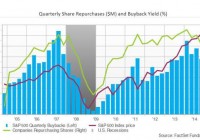2 Words Of Caution For The VelocityShares Daily Inverse VIX Short-Term ETN
There are some articles on SA which have recommended purchasing the XIV, based on its pronounced outperformance of the market. However, investors who are tempted to initiate a position in this ETF should be very well aware of its extremely high risk. XIV can go to zero on a single day. It lost 71% in the summer of 2011, while the market lost 16%. There are some articles on SA which have recommended purchasing the VelocityShares Daily Inverse VIX Short-Term ETN (NASDAQ: XIV ). These articles emphasize the exceptional returns of this ETF since its introduction 5 years ago, as well as its pronounced outperformance of the S&P (288% vs. 78%). However, investors who are tempted to initiate a position in this ETF should be very well aware of its extremely high risk. Therefore, I consider it irresponsible of those who recommend it without mentioning its risk. First of all, XIV aims to replicate, net of expenses, the inverse of the daily performance of the S&P 500 VIX Short-Term Futures index. Therefore, XIV exhibits great performance when the market rises and volatility is low. Even better, when the market is in a calm status, the VIX futures exhibit a marked contango structure (the prompt futures are much cheaper than the distant futures) and hence XIV gains about 5% per month only from rolling its futures (buying back the ones that are about to expire and selling those of the next month). This is the strength of XIV; even if volatility is flat, XIV gains about 5% per month thanks to the contango structure, which is an exceptional return. Unfortunately, reality is not so simple. To be sure, there have been periods in which the market has remained fairly flat, along with the volatility index, but XIV has not made a profit. For instance, last summer the market remained flat from July to September but XIV lost about 5% during that period. This weakness comes from the fact that XIV buys additional VIX futures when they increase in value and sells more VIX futures when they decrease in value. This inefficient operation of buying high and selling low is dictated by the primary goal of the ETF, which is to replicate the inverse of VIX on a daily basis. To make a long story short, XIV has to buy high and sell low on a daily basis just to accomplish its official goal and this handicap can fully or partly offset its profit from contango, depending on the magnitude of the daily moves of VIX. While this is an important handicap that has not been mentioned in any article, the main weakness of XIV is its extremely high risk. More specifically, when the market experiences a significant correction, XIV collapses. For instance, while the S&P lost 16% in the summer of 2011, XIV lost 71% during that period, plunging from 19 to 5.5. This is an extreme loss, particularly given that it resulted from a normal market correction of just 16%. It would be interesting to check the performance of XIV during the bear market of 2008 or the flash crash but unfortunately (?) the ETF was introduced only in late 2010. Nevertheless, as a 16% market correction led to a 71% dive of XIV, it is reasonable to assume that the bear market of 2008, with a total loss of about 55%, would have destroyed XIV. Indeed the issuer of XIV explicitly warns investors that the ETF can go to zero on a single day (!) with extreme volatility. Therefore, the ETF holders should not use it as a long-term part of their portfolio but only as a hedging instrument on a small scale. To sum up, XIV greatly profits from the contango structure of VIX futures, particularly in a strong bull market like the ongoing bull market of the last 6 years. However, the ETF is obliged to buy high and sell low only to accomplish its stated goal of replicating the inverse of VIX. Even worse, the ETF will be completely devastated on a single day with extreme volatility or during a strong bear market. Therefore, investors should weigh the risk/reward ratio before initiating a position in this ETF. Disclosure: I/we have no positions in any stocks mentioned, and no plans to initiate any positions within the next 72 hours. (More…) I wrote this article myself, and it expresses my own opinions. I am not receiving compensation for it (other than from Seeking Alpha). I have no business relationship with any company whose stock is mentioned in this article.
